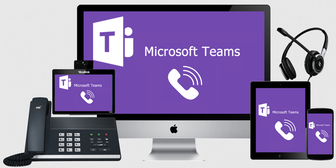 When the lockdowns started in 2020, there was much concern about how we’d manage remote work. And for the most part, we figured it out and yet now it seems even trickier. Our new reality is that we now work and have meetings with some folks in the office and some remote. This mix requires planning and the right tools to ensure everyone can participate.  Are your employees using Microsoft Teams or another chat and collaboration tool as a primary method of communication with others in your organization? Are they also forced to change their focus from their machines to a traditional desk phone in order to reach clients or partners? Do you still have budget dedicated to the maintenance, rental or licensing costs from a Private Branch Exchange (PBX) or Voice over IP (VOIP) Solution while users lose productivity switching between their Teams client and their desk phone to place calls? With the Microsoft Teams and Phone System in Office 365 you can keep the calling features your organization needs, increase the productivity of your workers and in most cases, reduce the cost of equipment, licensing and the notoriously exorbitant UC support contracts. Sounds pretty good huh?! Keep reading to get answers to some commonly asked questions that plague organizations when making the decision to use Microsoft Teams as a calling platform.  There are many potential benefits to implementing Microsoft Teams voice calling capabilities in your organization, such as:
But what happens to those who leap before they look? |
Categories
All
Archives
June 2023
Subscribe |
 RSS Feed
RSS Feed
